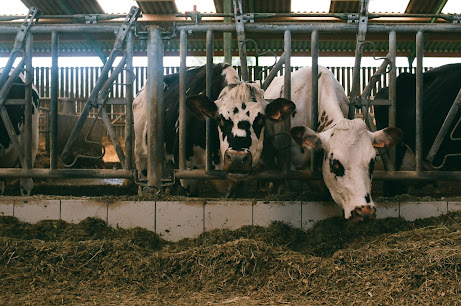Nourishing India's Livestock: Unveiling the World of Cattle Feed Manufacturers
In the heartland of India, where the fields stretch out like an emerald carpet under the sun's gentle caress, lies a crucial industry that often goes unnoticed – cattle feed manufacturing. As the agrarian landscape continues to be the backbone of India's economy, the significance of quality cattle feed cannot be overstated. In this exploration, we delve into the intricate world of cattle feed manufacturers in India, uncovering their role in sustaining the nation's livestock and agriculture.
Understanding the Landscape
India's diverse climatic conditions and varied agricultural practices create a complex ecosystem for cattle farming. From the lush pastures of Punjab to the arid plains of Rajasthan, each region presents unique challenges and opportunities for cattle rearing. Cattle feed manufacturers play a pivotal role in bridging the gap between these diverse environments and the nutritional needs of livestock.
Innovation Driving Growth
In recent years, the cattle feed industry in India has witnessed a surge in innovation. Manufacturers are investing in research and development to create feed formulations tailored to the specific requirements of different breeds and stages of cattle. This emphasis on innovation has not only improved the health and productivity of livestock but has also enhanced the sustainability of cattle farming practices.
Quality Assurance and Standards
Ensuring the quality and safety of cattle feed is paramount for manufacturers. With stringent regulations in place, manufacturers adhere to strict quality control measures at every stage of the production process. From sourcing raw materials to the final packaging, every aspect is meticulously monitored to meet national and international standards.
Empowering Farmers
Cattle feed manufacturers in India go beyond just producing feed; they actively engage with farmers to provide knowledge and support. Through workshops, training programs, and on-field demonstrations, manufacturers empower farmers with the latest insights and best practices in cattle nutrition and management. This collaborative approach not only enhances the efficiency of cattle farming but also improves the livelihoods of farmers across the country.
Sustainable Practices
As sustainability takes center stage globally, Cattle feed manufacturers in India are embracing eco-friendly practices. From adopting organic farming methods to reducing carbon emissions, manufacturers are taking proactive steps to minimize their environmental footprint. By promoting sustainable agriculture, these manufacturers are not only preserving the planet for future generations but also ensuring the long-term viability of the cattle farming industry.
Challenges and Opportunities
Despite the strides made by the cattle feed industry, challenges persist. Fluctuations in raw material prices, unpredictable weather patterns, and evolving market dynamics pose ongoing challenges for manufacturers. However, with challenges come opportunities. Manufacturers are leveraging technology, data analytics, and market insights to navigate these challenges and drive growth in the industry.
Looking Ahead
As India's population continues to grow, the demand for dairy and meat products is expected to rise significantly. This presents a vast opportunity for Cattle feed manufacturers in India to expand their operations and meet the growing demand. By embracing innovation, sustainability, and collaboration, manufacturers can not only meet the nutritional needs of India's livestock but also contribute to the nation's agricultural growth and prosperity.
Conclusion
In the tapestry of India's agricultural landscape, Cattle feed manufacturers in India form an essential thread, weaving together the elements of innovation, quality, and sustainability. As they continue to nourish the nation's livestock and empower its farmers, they play a vital role in shaping the future of India's agriculture. Through their dedication and commitment, they ensure that the fields of India remain fertile, and the cattle thrive for generations to come.

.jpg)

Comments
Post a Comment